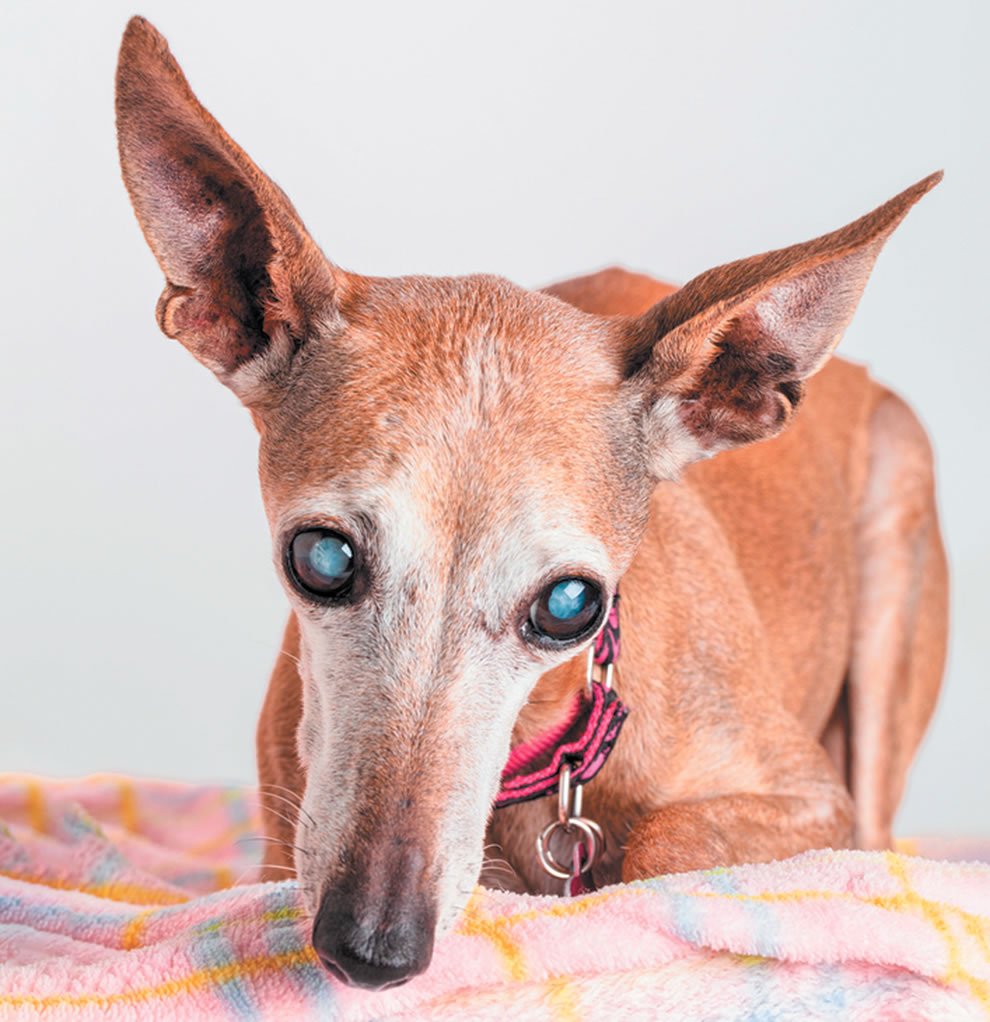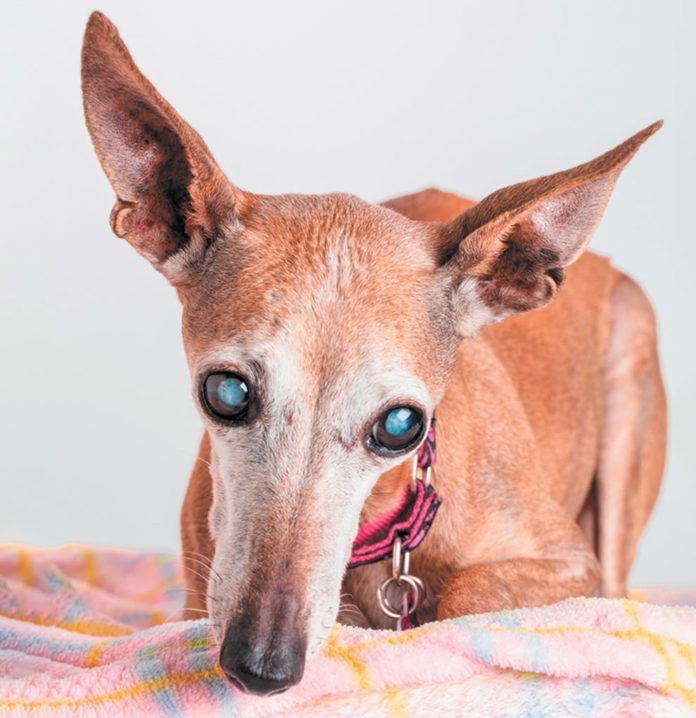

© PixelsAway | Bigstock
One of your dog’s eyes has whitish or clear gook in the inner corner. To what degree should you be concerned?
None at all. It’s perfectly normal. In fact, almost all dogs have it. Just put warm water on a cotton ball and wipe the lower lid to get out the “gook.” You don’t want to rub the eye itself, as that will get cotton in it.
What’s not normal is if the gook is back in a few minutes. That warrants a trip to the veterinarian’s office to see what’s going on.
Here are some other eye signs that in many cases should prompt a visit to the doctor.
Red Eye. If the red eye resolves on its own within 24 hours, it was probably just a minor irritant that caused the discoloration. But if it doesn’t go away, it could signify any one of these serious conditions: a corneal ulcer, meaning a tear or other disfiguration in the cornea — the transparent, protective covering over the eye; inflammation arising from a tick-borne disease; a sudden-onset cataract; or glaucoma, which is high pressure in the eye that has to be treated very quickly to avoid blindness. If the red eye is accompanied by your dog’s going off by herself as if she has a bad headache, don’t wait a day to see if it improves. Go now.
Pus-like discharge. Pus is not white to clear. It’s green to greenish-yellow, and it tends to indicate inflammation, just like red eye can. Often the cause of inflammation in these cases is dry eye. If the eye is not getting enough tears, glands that produce mucus and oils start to over-produce in an effort to compensate, creating the viscous discharge. Bacteria then get into that discharge, changing its color from whitish to greenish.
Other causes of greenish-yellow pus include foreign bodies somewhere in a dog’s eye and entropion, a situation in which the lids roll inward so that hairs normally on the outside are now rubbing on the cornea. That one requires a surgical solution, but any greenish-to-yellow pus means a visit to a veterinarian is in order for proper diagnosis and treatment.
Swelling around the eye. Usually, a swollen area around the eye means either that there has been a trauma to that area or the dog is having an allergic reaction to something. Sometimes, though, it’s indicative of an autoimmune reaction, perhaps to the eye muscles, causing the eye to look very bulged out. Sudden onset of glaucoma can cause swelling, too. Get your dog to the vet’s office.
Sudden change to red. If the whole eye looks red — not just the white of the eye but also the pupil and the brown or blue iris — it means there has been hemorrhaging. You definitely want to have that checked out.
Change to white or a change in transparency. A slow whitening of the eye could signify either the formation of a cataract or lenticular sclerosis, a common sign of aging that doesn’t affect vision. A veterinarian can distinguish one from the other. But if the cornea, instead of being crystal clear and see-through, now looks cloudy (as opposed to white), there’s a good chance of glaucoma, and in this instance there truly is no time to lose. The surface of the eye has become cloudy, or hazy, because of the pressure of fluid in the cornea, and urgent treatment is necessary to save the dog’s vision.
Closed lid. Known medically as blepharospasm, a closed lid generally indicates anything from discomfort to outright pain from a number of the ocular conditions discussed here. You definitely want to get your dog to the doctor ASAP to fix whatever’s wrong.





